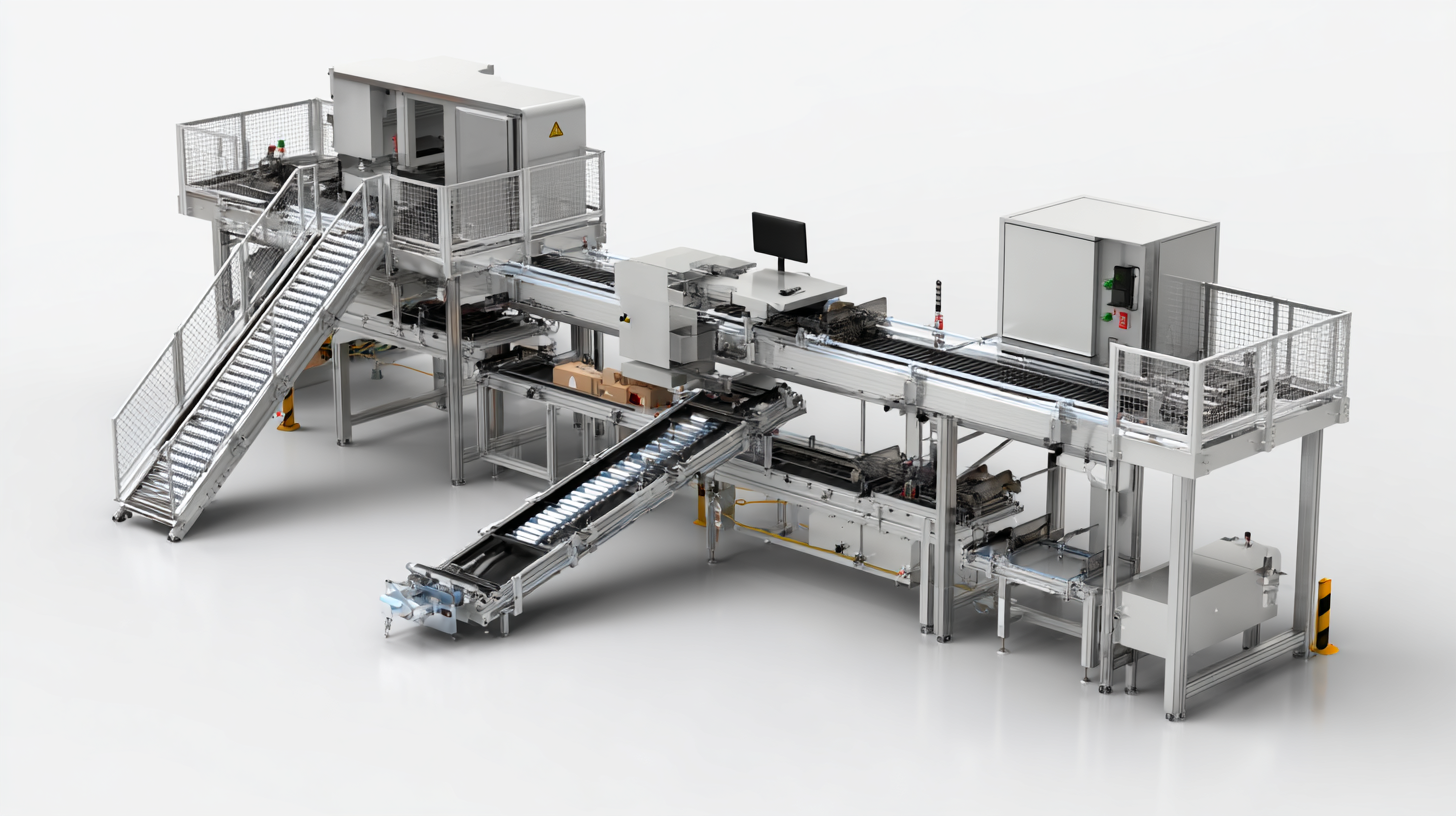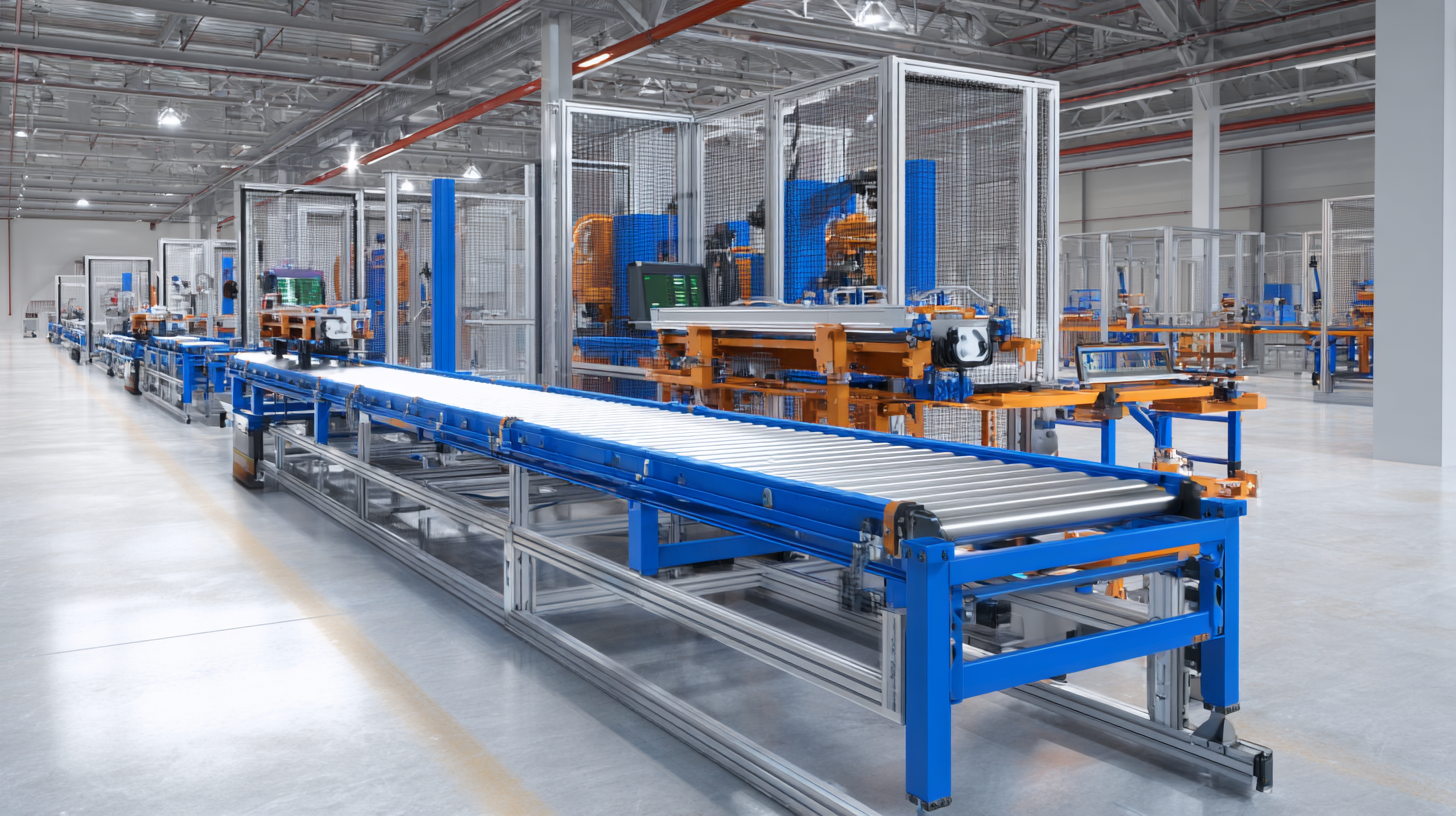In the ever-evolving landscape of global manufacturing, the significance of high-quality Assembly Conveyor Systems is increasingly underscored by industry reports. According to a recent study by the International Federation of Robotics, the global market for conveyor systems is projected to reach $10.9 billion by 2026, driven by the growing demand for automation and efficiency in production lines.

China, as a leading manufacturer in this sector, offers a diverse range of assembly conveyor systems tailored to various products, each with its unique characteristics and applications. The versatility and innovation found in these systems not only enhance productivity but also elevate manufacturing standards across the globe, making them a crucial investment for companies looking to stay competitive in today’s fast-paced environment.
Understanding the different types and their suitability is essential for businesses aiming to optimize their operations and achieve sustainable growth.
The rise of high-quality assembly conveyor systems from China has significantly impacted global manufacturing standards. These conveyor systems are designed with several key features that enhance efficiency and productivity. According to a report by the International Federation of Robotics, the robotics industry is expected to grow at a CAGR of 26% between 2021 and 2024, largely driven by advancements in automated assembly lines. High-quality conveyor systems are integral to this growth, enabling manufacturers to streamline operations and reduce production cycle times.

One of the standout features of these conveyor systems is their adaptability. Many systems incorporate modular designs, allowing manufacturers to easily reconfigure layouts to meet evolving production demands. A study from the Manufacturing Institute highlights that companies utilizing flexible manufacturing systems have seen up to a 30% increase in operational efficiency. Moreover, the integration of IoT technology in conveyor systems facilitates real-time monitoring and predictive maintenance, minimizing downtime and enhancing overall productivity. This convergence of technology and design is essential for manufacturers looking to maintain a competitive edge in a rapidly changing landscape.
When sourcing conveyor systems from China, there are several essential considerations to keep in mind. First, understanding the specific needs of your manufacturing process is crucial. Different industries may require varying types of conveyors, including modular belts, roller systems, or automated solutions. By clearly defining your operational requirements, you can better communicate with suppliers and ensure that the systems you procure will seamlessly integrate into your production line.
Additionally, it's important to assess the quality and reliability of potential manufacturers. Look for companies with a strong track record and experience in producing high-quality conveyor systems. Certifications such as ISO standards can serve as indicators of a manufacturer’s commitment to quality. Engaging in thorough due diligence, including visiting factories and requesting product samples, can help you verify the legitimacy and capabilities of the supplier.
Finally, consider the long-term support and service provided by the manufacturer. Establishing a partnership with a supplier that offers robust after-sales support, warranties, and accessible technical assistance can significantly enhance operational efficiency. By taking these factors into account, businesses can ensure they choose a reliable conveyor system that meets global manufacturing standards and elevates productivity.
In the realm of global manufacturing, assembly conveyor systems play a pivotal role in enhancing productivity and efficiency. The evaluation of manufacturing standards in these systems is essential to ensure they meet the rigorous demands of modern production lines. High-quality conveyors not only optimize workflow but also reduce downtime and operational costs, making them indispensable in competitive industries.
China has emerged as a key player in the production of sophisticated assembly conveyor systems, setting benchmarks that influence worldwide manufacturing practices. By implementing stringent quality control measures and advanced technology in their manufacturing processes, Chinese companies are elevating the standards of assembly conveyors. This commitment to excellence fosters innovation and drives the adoption of best practices across the global supply chain, thereby influencing how manufacturers design and integrate these systems into their operations. The emphasis on high-quality standards not only enhances the reliability of machinery but also significantly impacts overall manufacturing efficiency.
In the rapidly evolving landscape of global manufacturing, the incorporation of advanced conveyor technologies has become a paramount strategy for enhancing efficiency and productivity. High-quality assembly conveyor systems from China are leading the charge, offering innovative solutions that cater to diverse industrial needs. These systems are designed to streamline production processes, minimize downtime, and optimize material handling, ultimately contributing to higher output and reduced operational costs.
One of the key benefits of utilizing these advanced conveyor technologies is their adaptability. Manufacturers can customize conveyor systems to fit specific workflows, ensuring a seamless integration into existing production lines. Additionally, these systems often employ cutting-edge automation features, which not only enhance speed and accuracy but also reduce the likelihood of human error. By implementing these high-quality assembly conveyor systems, businesses can gain a competitive edge, improve safety standards, and ensure consistent product quality, thus elevating their manufacturing capabilities on a global scale.

When investing in high-quality assembly conveyor systems, it is crucial to focus on long-term performance and maintenance to maximize your operational efficiency. One of the key considerations is selecting conveyor systems that are designed for durability and minimal upkeep. This means choosing materials and components that withstand wear and tear, thereby reducing the frequency and cost of maintenance. Regular inspections and preventive maintenance practices should also be established to ensure that any potential issues are identified and addressed early, which can significantly extend the lifespan of the equipment.
Furthermore, implementing standardized maintenance procedures can lead to improved reliability and sustainability of conveyor systems. Drawing from best practices seen across various industries, such as those in transportation and energy, regular performance evaluations are essential. These assessments allow operators to adjust settings, replace worn parts, and optimize the entire system for peak efficiency. By placing emphasis on these proactive measures, companies can not only achieve a smoother operational flow but also safeguard against unexpected downtimes, ultimately enhancing their manufacturing capability and competitiveness in a global market.
